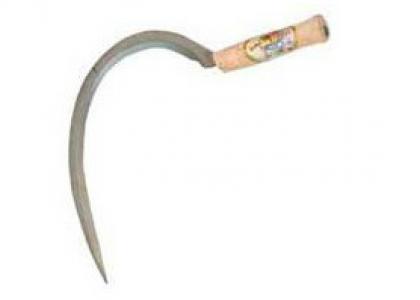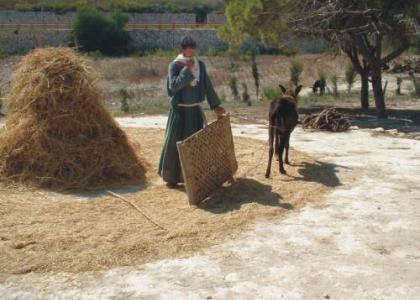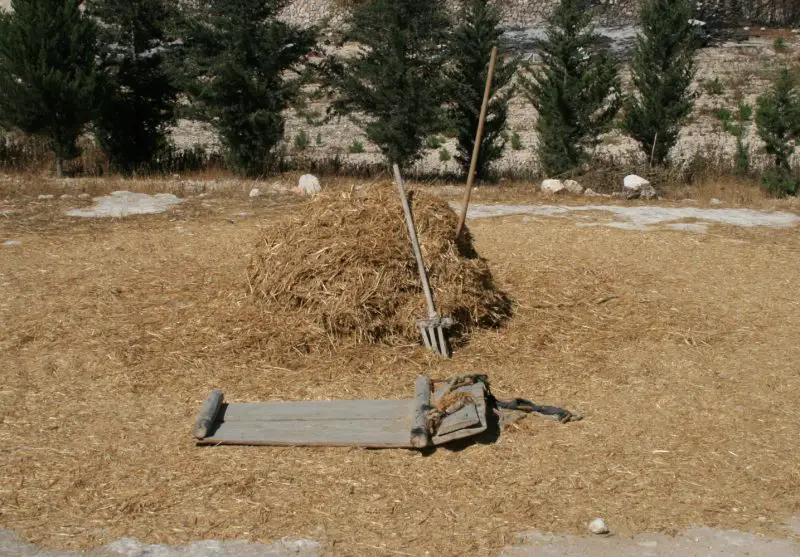SPIRITUAL SIGNIFICANCE OF THRESHING FLOOR
Spiritual significance of threshing floor.
Threshing wheat in Bible times. The threshing floor is mentioned in many places in the Bible. It is the place where the wheat is separated from the grain. But in biblical symbolism, it also stands for a spot of purification and humiliation. Jesus was announced by John the Baptist as: “The One who will baptize with the Holy Spirit and with fire. He will clean the threshing floor and burn the chaff with unquenchable fire” (Luke 3: 16-17).
The threshing floor is the place where our heart is purified by the work of the Spirit. And a pure heart can meet God and understand His voice, as Isaiah prophesies here. When David had sinned and humbled himself before God, he built an altar on the threshing floor (2 Samuel. 24:18). Eventually, the temple was built on the same spot. God wants to build His church on the foundation of humiliation.
[embedyt] https://www.youtube.com/watch?v=5-2jW9DLiqU[/embedyt]As God said to Solomon: “If My people, for which My Name has been proclaimed, bow down and pray in humility, and seek My face, and turn away from their evil ways, I will hear from heaven, forgive their sins, and heal their land” (2 Chron. 7:14). God not only wants to build His church but also to heal and restore the land! What a promise!
A threshing floor is also a place of intimacy. Where can the Holy Spirit connect better with our Spirit than in deep fellowship with Him? Where we surrender to Jesus, and He can blow through our court?
The meeting between Ruth and Boaz took place on the threshing floor (Ruth 3: 3). That encounter symbolizes the encounter between Jesus and His bride. He wants to give Himself to us when we submit to Him, what an invitation sounds through here!
Come to the threshing floor, just as the grain is brought there. He will come with His fire, and a new passion for Him will be ignited in your heart.
Threshing floor / Biblical image
The threshing floor is a Biblical place and a well-known Biblical statue. How should the people who do not live in the countryside imagine the threshing of grain in Israel? Let me start at the beginning.

The culms cut with the sickle were bundled loosely and then loaded onto donkeys and taken to the threshing floor to fan them.

Sometimes the animals were loaded so high and wide that they resembled a large grain pile on four legs.

The threshing floor was the common property of the entire village. It was a large solid place, preferably a bare rock plateau. Every villager had his own place on this threshing floor.
Also sleeping places
The houses were often abandoned during the threshing season, because the whole family spent the day and night on the threshing floor (Ruth 3) First came the barley harvest. Then the wheat harvest.

Corn stalks. the grain must be removed from the grain stalks by threshing
Four ways of threshing.
1)
The poor man drove his ox back and forth over the spread corn. The corn was trampled by the animal’s hooves for so long that the corn was removed from it. Sometimes the animals wore a muzzle. That was not permitted: “You will not muzzle a threshing ox,” the apostle wrote. After all, a worker in the gospel is worth his pay.
2)

The more well-to-do citizens owned a threshing sledge. This is a heavy wooden board, the underside of which has small sharp points made of metal or stone. A draft animal was strained for it. This sled was pulled back and forth over the straw, causing the grains to release from the ears.
3)
In addition to the threshing sledge, there was another threshing implement: the so-called wagon wheel . That was a square wooden window mounted on small wooden wheels. There was a sort of bench for the driver on that window. That wagon wheel was pulled by two horses (Isa. 27:28). That was the toughest way to thresh.
4)
Finally, there was a fourth way in which the wheat (or dill and cumin) with long sticks was knocked out of the ears. In Isa. 28:27 one finds these ways of threshing in one text: Dill is not threshed with a threshing sledge and no cogwheel is rolled over cumin, but dill is knocked with a stick and cumin with a rod ”Dill and cumin therefore had to be very careful threshing.
Pans
When the cereal grains were removed from the spikes, the roasting began. To be able to wane, people needed wind and that is why it usually happened in the evening when a light cool air blew. With a fork, the mass of straw, chaff, and corn were thrown up. The grain immediately fell due to its gravity.
The lighter straw couples were carried away by the wind and fell to the ground further down. The even lighter chaff fell further away. The corn was heaped in barns.
Strain, shake and shake
The corn still had to be cleaned from sand and grit. A sieve was used for this. After the waving it was followed by sieving or sifting. The threshed grain was shaken vigorously in a large sieve. The grit and the stones had to fall to the ground as a result, but the grain had to be preserved.
That sieve certainly had a diameter of one meter. The corn was brought in and shaken back and forth by the farmers. Now it was no longer the cleansing and cleansing that was paramount, but the shaking and bumping of the grain. Jesus was well aware of the function of the sieve.
Shake: request image
After all, he said to Peter: Simon, Simon, Satan has tried to sift you like the wheat, but I have prayed for you that your faith would not collapse. Here this image is used for serious temptations. So Simon was thrown back and forth and shocked like the grain in a sieve.
Their trust in Jesus will have to endure strong shocks. Satan will heavily tempt Jesus’ disciples so that they may ask themselves: Is Jesus the person for whom He proclaims himself? In Egypt, seven were sometimes omitted. The grain was then easier to grind with the grit. The result, however, was that the molars of the Egyptians were soon worn off.
Shark

Shredding that was unsuitable for animal feed was used thousands of years ago, like here in Catal Huyuk, for the construction of mud houses. Sludge was mixed with the straw.


The people of Israel worked as slaves in Egypt and had to bake bricks and collect the straw chopper themselves
After threshing and sieving, the chopping of the grain stubble was collected to feed the cattle. A shredder that was not suitable for this because the stubble was too hard was used to heat the oven or – mixed with loam – made suitable for home construction.
In Ex. 5: 5-11 we read that the Israelites were already baking tile bricks in Egypt by mixing the Nile sludge with straw and then drying it. First the straw was delivered, but then they had to go get it themselves!
Kafr
Finally the chaff remained. Heaps of chaff that remained were burned. In the Bible there is talk of “chaff being burned with fire”. It was completely worthless. The threshing floor is therefore a well-known Biblical statue. It is a place where the good corn is separated from the worthless chaff, just as at the last judgment there will be a separation between people. But there is no emphasis on that.
Jesus intercession
The emphasis is on the intercession of Jesus: I have prayed for you that your faith in Me would not collapse. And then Jesus adds; And when you have returned (ie to normal everyday life) then strengthen the brothers. That translation is possible or should we indeed think of the conversion of Peter (NBG) or of a repentance of Peter (NBV)? Then we must read; If you have repented, strengthen the brothers.

